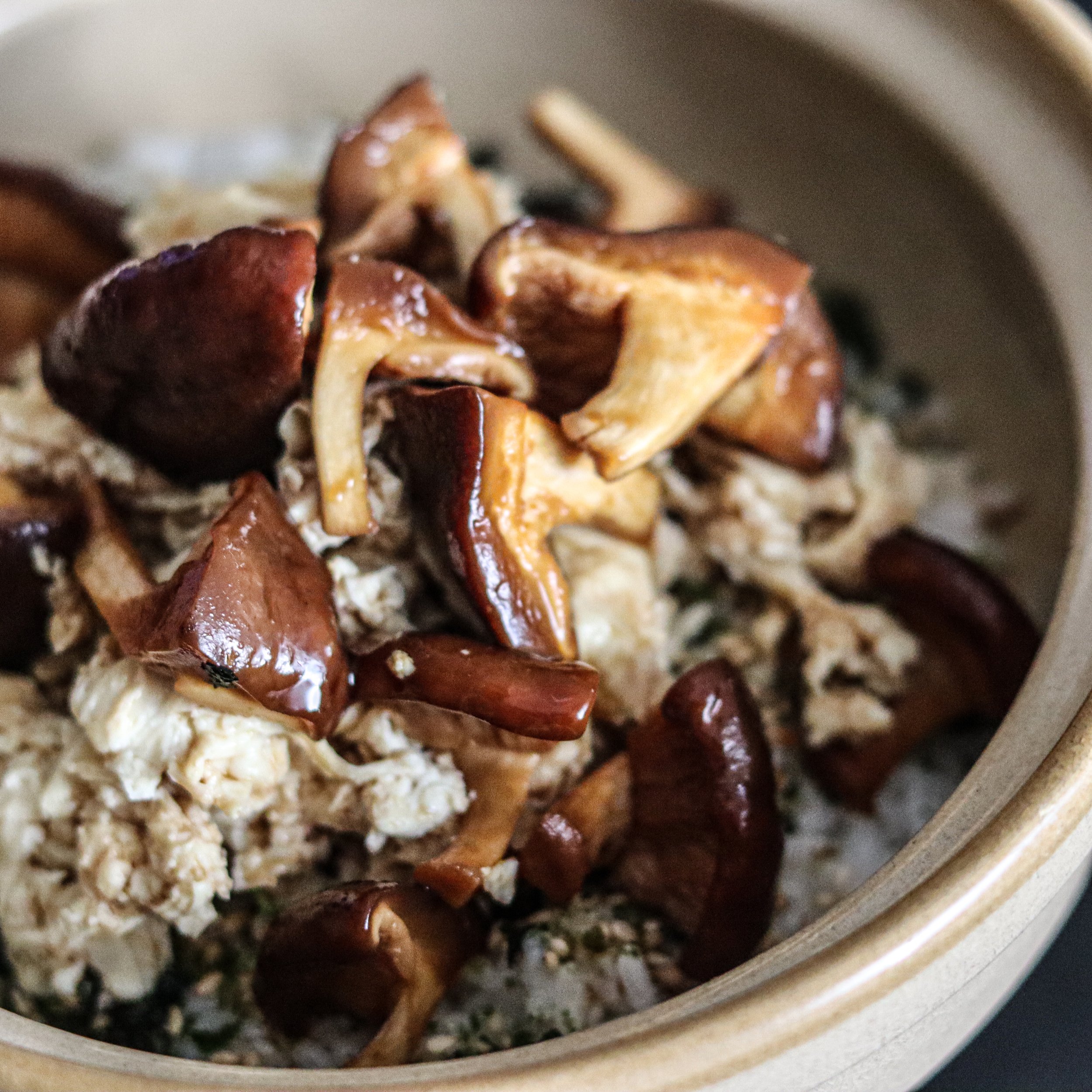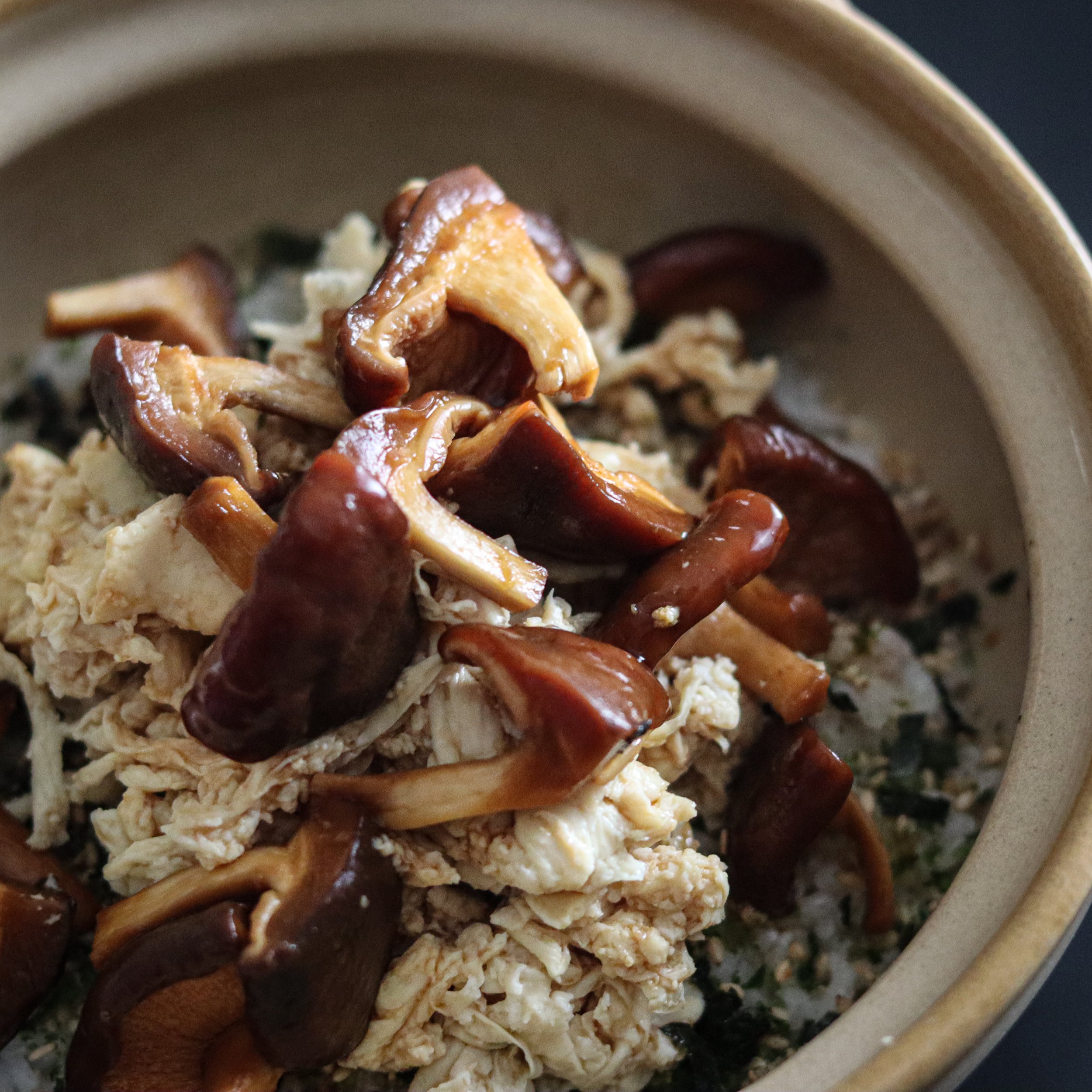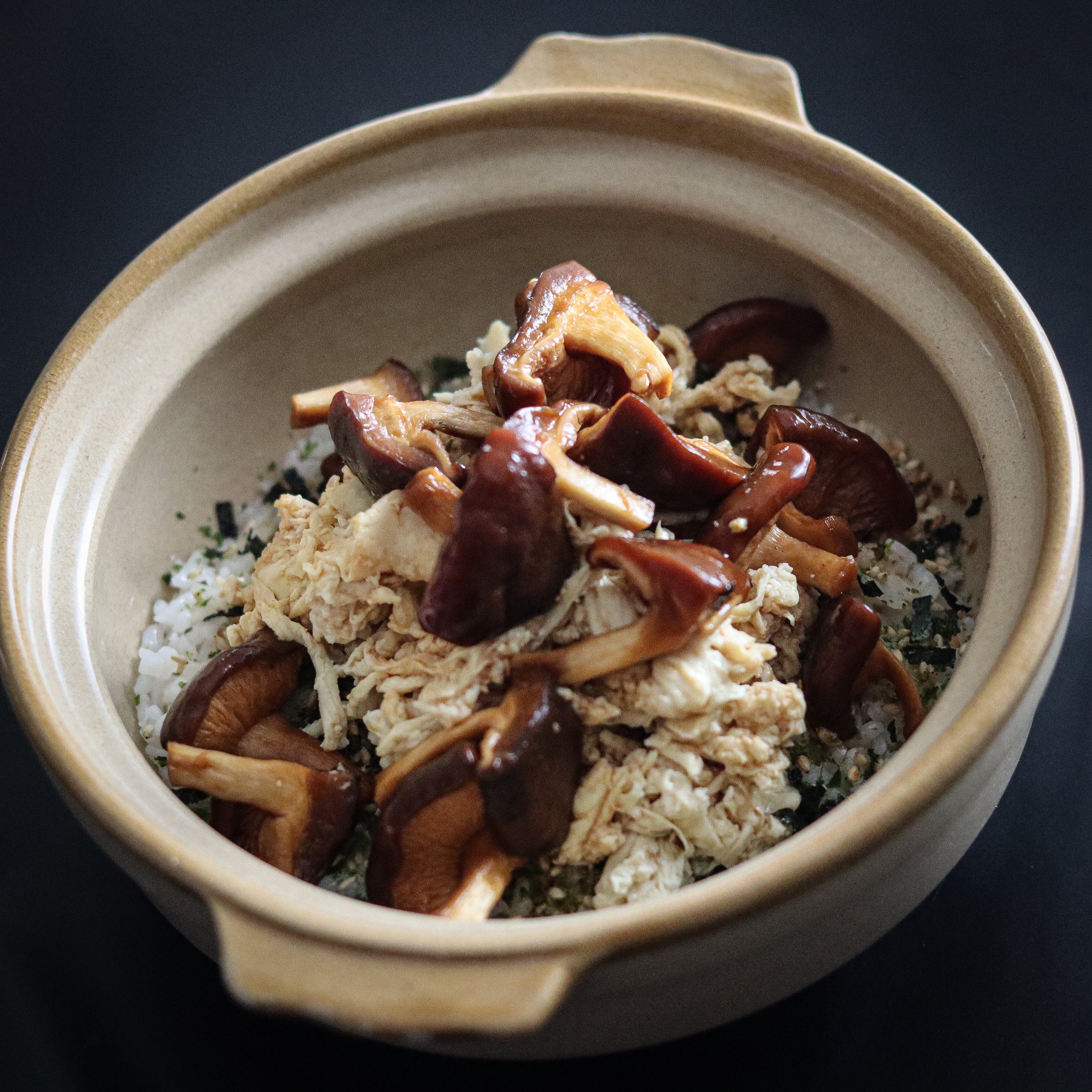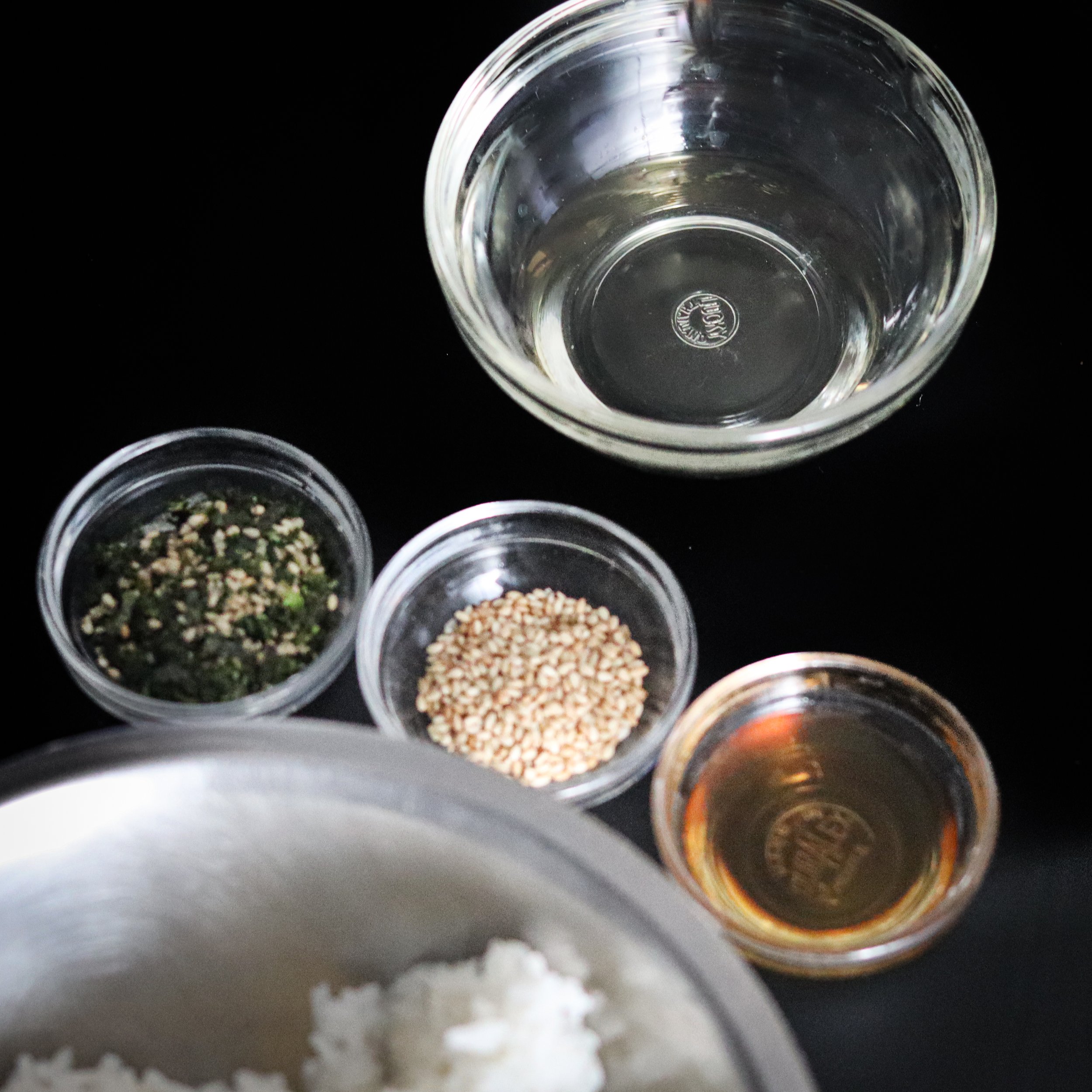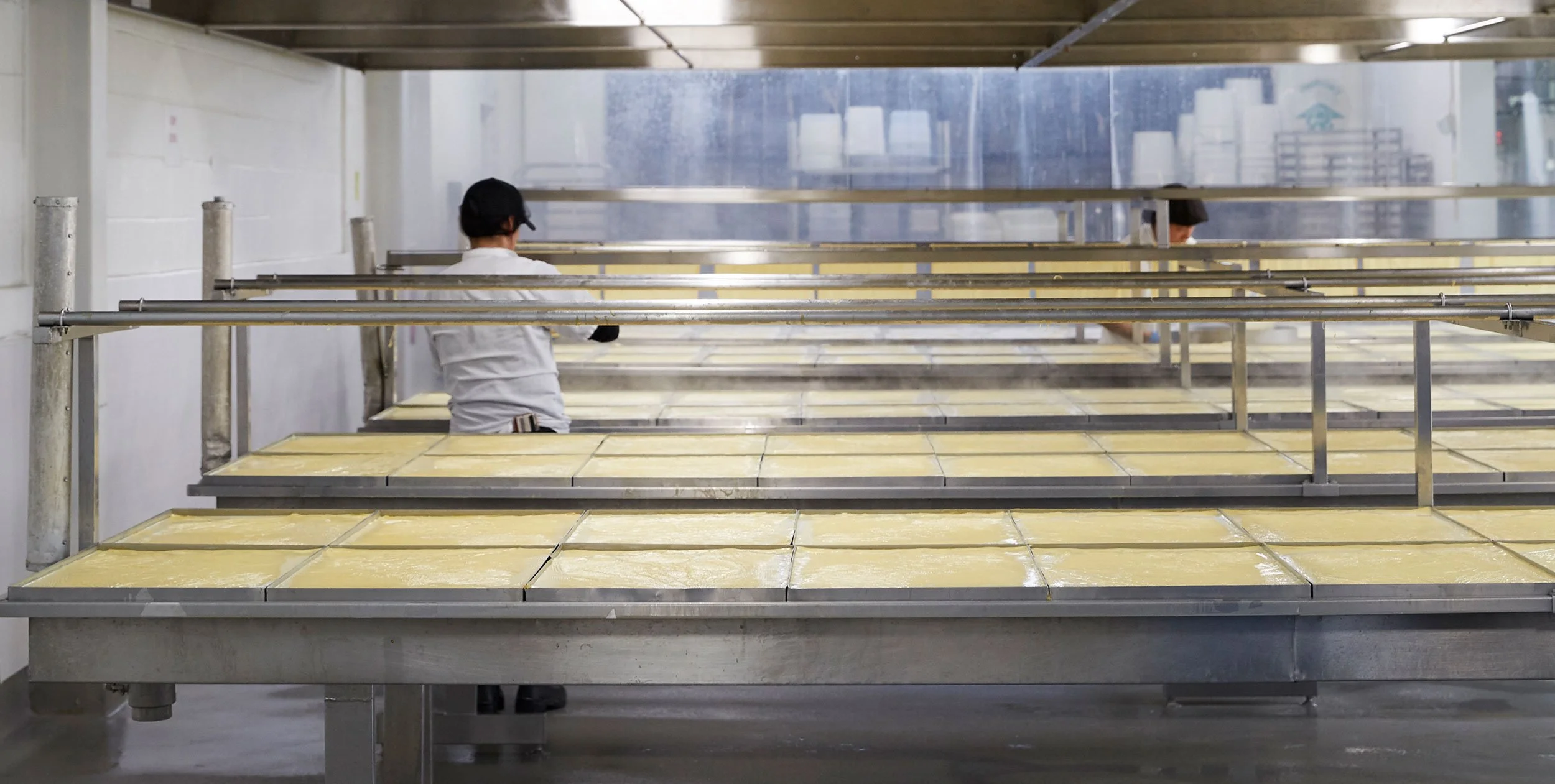![Yuba [Tàu Hũ Ky] Yuba [Tàu Hũ Ky]](https://i.imgur.com/39iIL7f.jpg)
Yuba [Tàu Hũ Ky]
Ingredients
Instructions
- Rinse the beans well and add them to a bowl of water. The beans should be covered by 2 in (5 cm) of water.
- Let them soak overnight at room temperature When the beans are done, they’ll split easily when squeezed. Split one open and look-if the inside is flat and buttercup yellow, it's ready If the inside is concave or rubbery, let the beans soak longer. The soaking time can vary. We're recommending 12 hours, but don’t be worried if it takes up to 18
- Drain the beans through a sieve or strainer, and reserve the soaking water. Add more filtered water to the reserved water until you reach a total of 8 cups (2 L).
- Heat 5 cups (1.25 L) of the reserved water in a large pot over medium-high heat.
- While that water warms, grind the beans in the blender with 2 more cups (500 ml) of the reserved soaking water. Puree the mixture until it looks exactly like a milkshake. Pour the blended mixture into the hot pot of water. Rinse out the blender with an additional 1/2 cup (125 ml) of the reserved water, and add it to the pot as well.
- Cook the soybean mixture for 3-6 minutes, stirring the bottom frequently with a wooden spatula to avoid any burning. You’ll know it’s done when it starts foaming. It will look like the frothy foam head of a big pint of beer.
- Quickly turn off the heat and stir to deflate. Keep an eye on this mixture; it can boil over easily.
- Andrea’s tip: Now’s a good time to set up a station for straining the soy milk. Put a medium-sized pot in the sink, and place a colander or mesh strainer in the pot. Line the colander with a pressing cloth, such as a clean piece of lightweight muslin, and drape the edges of the cloth over the pot’s rim. Make sure to have a pressing tool handy; a potato masher works great here.
- Pour the hot mixture into the pressing cloth. Pause when the cloth is full, and let the milk strain. Repeat.
- When all of the milk has strained, gather up the pressing cloth and twist the sides closed to form a sack. If it’s too hot to hold, let it cool off for a few minutes (basically, don't burn yourself with hot milk, please.) Use the pressing tool to mash your makeshift sack against the colander and extract more soy milk.
- PRO TIP: You can extract even more milk by opening up the pressing cloth and spreading out the solids (the lees). Add the final 1/2 cup (125 ml) of the reserved water, and stir until the lees look like polenta. If the lees are too hot, let them cool for 3-5 minutes. Twist the pressing cloth and wring out the rest of the soy milk. Discard the lees, or save them for another use.
- Bring the soy milk to a gentle simmer over medium-high heat. Cook the mixture for five minutes, stirring frequently with your wooden spatula. Use a strainer to remove any skin that forms on the surface.
- Serve hot, store in the fridge to chill, and serve cold. Keeps for at least 4-5 days. Or use this soymilk to make tofu.
- Making yuba is quite simple and when cooking or heating soymilk, like dairy milk, you’ll start to see a layer begin to form on the surface of the milk.
- In order to make yuba, you simply keep the milk at a temperature hovering around 155F (to ensure it doesn’t burn at the bottom of the pot)
- Wait for the sheets to form [5-7 minutes)
- Then remove by pinching two adjacent corners. Be careful to not tear the yuba; the sheets are extremely delicate.
- Lay the Yuba on a tray lined with a towel to remove excess moisture.
- Consume immediately.
Notes
NOTES
Making soy milk at home is relatively easy. If you’ve made nut milk at home, this is similar, with an additional cooking component. For legumes (beans, peas & peanuts), soaking and cooking them makes the nutrients more bioavailable for human consumption.
There are some soy milk machines out there, but if you have a stovetop, blender, and sieve, you'll be able to make soymilk easily. Back in the day, storing soybeans in the pantry was an efficient, cost-effective, and sustainably quick way to access protein.
If you're in The Bay Area, you're lucky to be able to score some of Hodo's soymilk, which is usually only reserved for chefs. It's available pre-order through the Farmers Market stand Hodo has on Saturdays at the Ferry Building, and in 2022, hope to see it come back to retailers like Rainbow Grocery.
Note:
This soymilk recipe is adapted from Andrea Nguyen’s book, Asian Tofu: Discover the Best, Make Your Own, and Cook It at Home, © 2012. Published by Ten Speed Press (Crown/Penguin Random House LLC).












